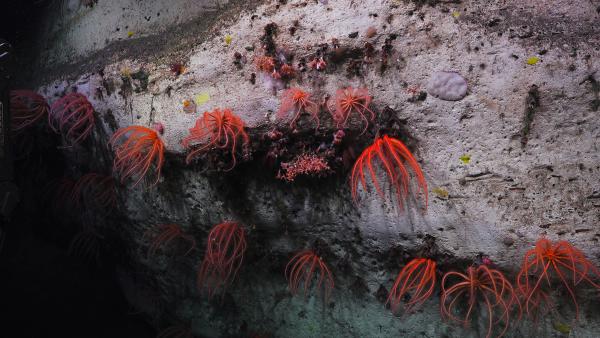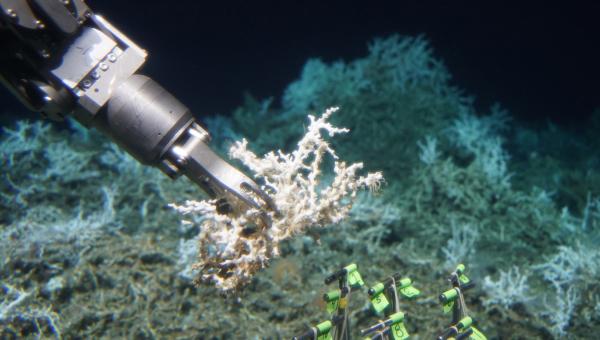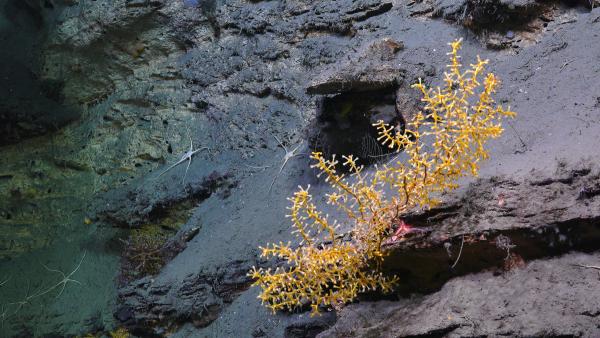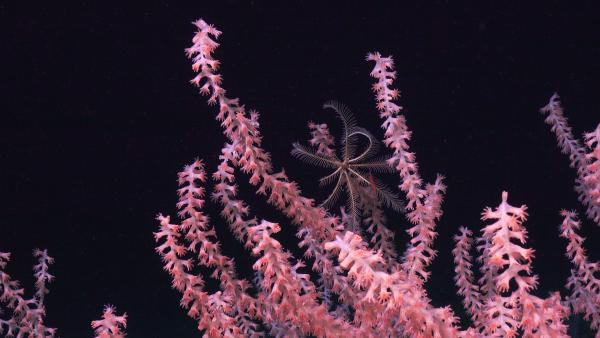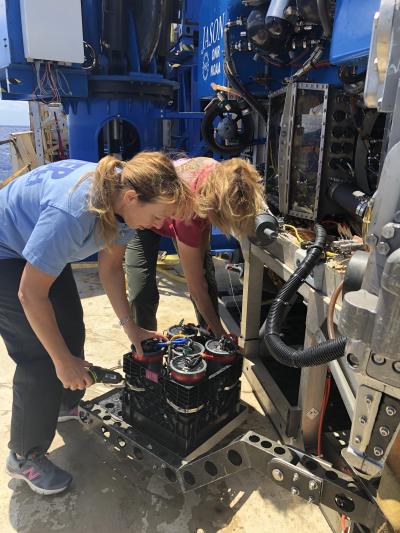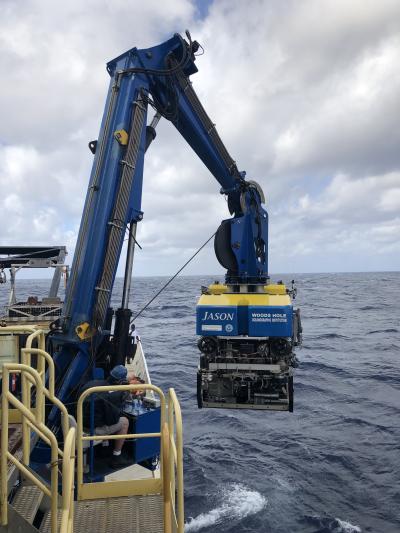The Atlantic Ocean’s vast and mysterious deep sea environment holds secrets that scientists are working to uncover. Researchers recently concluded a large multi-agency, five-year, study titled Deep Sea Exploration to Advance Research on Coral/Canyon/Cold seep Habitats (Deep SEARCH) that was designed to shed light on little-known deep sea ecosystems located off the Eastern Seaboard, stretching from Virginia to Georgia.
Deep SEARCH was a collaborative interagency project between BOEM, the U.S. Geological Survey, and the National Oceanic and Atmospheric Administration (NOAA), with assistance from the National Oceanographic Partnership Program (NOPP).
The study findings provide valuable baseline information for the Mid- and South-Atlantic, that can promote development of more accurate scientific models and inform BOEM’s future offshore energy development decisions, especially those that could affect sensitive habitats such as deep sea corals. Through surveys and detailed site analyses from 5 cruises, Deep SEARCH provided important insights into little-known habitats. It documented multiple methane seeps, deep sea canyons, and thriving deep sea coral communities – like the Richardson Reef Complex, one of the largest coldwater coral reefs ever documented.
In 2018, the science team observed extensive reefs of Lophelia pertusa, a deep sea stony coral (also known as Desmophyllum pertusum). While commonly found in the North Atlantic, Deep SEARCH researchers were surprised to see the species growing in waters deeper and further offshore than expected. Knowing the extent and location of sensitive habitats allows BOEM and other federal agencies to work together to protect them.
The study’s findings emphasize the importance of ongoing conservation efforts and the need to carefully manage deep sea resources, particular in regions where energy and mineral extraction activities are planned or underway. Data will also improve BOEM’s understanding of the interconnectedness of this important underwater habitat and ensure that the bureau has the best-available science to help inform its offshore energy and marine mineral policy decisions.
For More Information
- Read the BOEM report of the Deep Search study
- Exploring Coral Canyon, and Cold Seep Habitats off the Mid-Atlantic and Southeast Atlantic Coast: The Deep SEARCH Study
- Federal Ocean Partnership Launches Deep SEARCH Study off the Mid-and South-Atlantic Coast
- USGS Role in Deep SEARCH: Deep Sea Exploration to Advance Research on Coral, Canyon, and Cold-seep Habitats
- Deep SEARCH 2019: DEEP Sea Exploration to Advance Research on Coral/Canyon/Cold seep Habitats
This story is part of the “Unleashing the Science” series, showcasing how bureaus within the Department of the Interior produce and apply science to ensure responsible management decisions for our planet now and for the future.
--BOEM--
The Department of the Interior’s Bureau of Ocean Energy Management (BOEM) manages development of U.S. Outer Continental Shelf (OCS) energy, mineral, and geological resources in an environmentally and economically responsible way.


